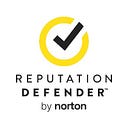How to Spot Toxic Links during Your Backlink Audit
If you’re looking to improve the SEO for your website, one of the things you should do is a backlink audit. Beyond the number of links you have to your website, it’s the quality of links that plays a significant role for your search engine ranking.
However, you can’t control who links to what on your website and why, making it necessary to keep an eye on the links that are coming in. That way you can hint to search engines about the links you want them to count and the ones you want them to ignore.
Assuming that you’ve already conducted a backlink audit, you should be looking to identify the toxic links.
Before you get started, it’s important to understand that you won’t be able to remove every single toxic link. You should aim to get rid of the ones you can and accept that some of them might still exist.
What’s a Toxic Backlink?
Previously, when search engines were in their early years, any backlink was a good backlink, but that’s not the case anymore. While there’s no formal definition of a toxic link but the term is used to refer to any backlink that comes from:
- Websites that are excessively monetized
- Link farms
- Websites with security flaws/risks
- Websites that are in violation of Google’s guidelines
Identifying Potential Toxic Links
When you’re looking at a link, consider the following:
- Trustworthiness: You should assess the trustworthiness of links. There are several tools that can assist you in this by compiling a score and assigning it to every link depending on their source.
- Domain Authority: Domain authority is another indicator that became popular among SEO experts as it is likely used by Google’s search engine. The lower the domain authority, the increased likelihood of a toxic link.
- Spam Score: A high score indicates the link is coming from a spam website and is toxic.
- Self Assessment: Numbers and indicators won’t always tell the whole story. Look at the website to determine if a link is worth keeping. If the website has a domain authority of 25 and looks promising but you see the content is low quality, it may be a source of toxic backlinks overall.
- Link Patterns: Look at the other links on the site — and see if the backlinks are excessively optimized in terms of their anchor text. Quality sites use a variety of anchor text — and if you only see exact match keyword phrases, it’s likely these could be labelled as toxic.
- Brand Alignment: Are the websites linking to you related to or aligned with your brand? If not, you may wish to consider them toxic. For example, if you’re advocating for a specific cause, then links from sites that are leaning against it might not have a beneficial effect.
